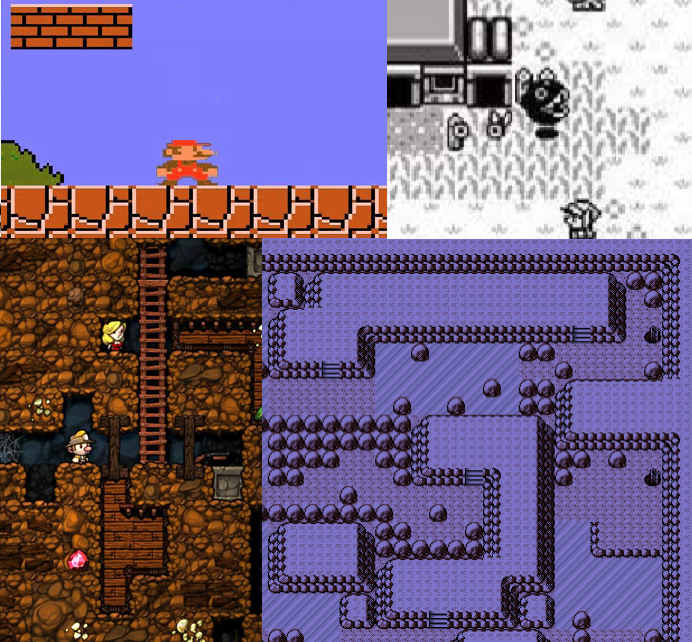Game Development Module Project - Hungry Penguins Game
Fri Nov 11, 2016 in IGGI#gamedevelopment #iggiphd

At the IGGI Game Development Module I took at Goldsmiths University in November 2016, it was needed to develop a game using Unity. I teamed up with one of the other students of the programme, Rory Davidson, and we created a puzzle-platformer.
Game
The idea of the game came up during the brainstorming session we had at the beginning of the module. We wanted to develop a game featuring penguins living in a city, being forced to steal fish in order to eat and survive. Citizens would try to prevent the penguins from taking the fish. Human clothes found in the game world could be used to fool the people and be able to walk through them without being noticed.

After several iterations of the game concept, from an action-adventure to a side-scrolling platformer; we opted for creating a game formed by a series of one-screen platforming puzzles, where the player needs to collect all the fish on screen to progress through the game.
At the beginning, it was considered the use of a top-down perspective, as it would allow different interactions with the environment and lot of flexibility moving objects and creating puzzles. Although many games exist making good use of this perspective in puzzle contexts, such as classic Zelda or Pokemon games, it would limit the character movement, losing basic forms of movement, such as jumping, without complicating the game excessively.
At the end, it was opted for using a platformer perspective, which would allow these kind of movements without missing the chance of creating interesting puzzles, as long as the objects and gameplay were designed properly.

To make sure the concept would work, we built a paper prototype and test it. This procedure helped us to polish the design of the game and to identify the elements we would like to include. We were aware that most of the engagement in these kind of games comes from the design of the puzzles and, from the initial prototype, we realised the need to include dynamic objects for the player to interact with.
A number of possible puzzle elements were discussed and the final design included two pushable objects, that would allow the player reach different areas that would not be reachable otherwise; and a disguise that would help the player to avoid detention.
Game design
The elements of the game are:
- Penguin. Main character of the game, controlled by the player; capable of moving right, left and jump.
- Ground. Where the penguin and the rest of objects stands on. It has different levels.
- Fish. Collectable by the player. It increases the counter displayed in the level. It is considered the win condition as the player needs to collect all of them to end the level.
- Penguin family. Exit of the level, where the player has to go once all the fish has been collected.
- Person. NPC the player should avoid as being discovered ends up on restarting the level.
- Hat. Collectable by the player. Allows the penguin to go through the people without being discovered.
- Box. Movable item.
- Ice box. Movable item that slides.
We opted to develop a fully functional prototype before the final design of the environment and assets were decided.

Being the game a platform-puzzle game, we decided to focus on illustrated art, as there was no need on using realistic images. We were looking to create an attractive and pleasant game to play. First of all, it was needed to find an appropriate background, preferably an illustration of a city with a high contrast in the colours, that would be used as the colour palette for the game, finally opting for dark purple and bright orange.
Having a static dark background was taken into consideration when the images that would be used for the assets were searched, as it was needed to find images that would stand out. Finally, as the game location was a city, we wanted to create that kind of atmosphere. For this reason, the object that originally we imagined as a box, were transformed into a bin in the final design stage of the game.
The colour palette defined was used when designing the UI elements:
- Fish display. Shows the number of total fish available in the level which the player would need to collect in order to finish the level.
- Restart level button. It allows to restart the level.
- Game over message. It is displayed when the player has been detected by a NPC or fall down into the void; allowing to restart the level.
- Win message. It is displayed when the player finishes a level; allowing the player access the next one.
Gameplay video
The full gameplay of the game developed can be found below:
The code
We created a Github repository containing the code of the game, that can be downloaded and run; so feel free to try it yourself!